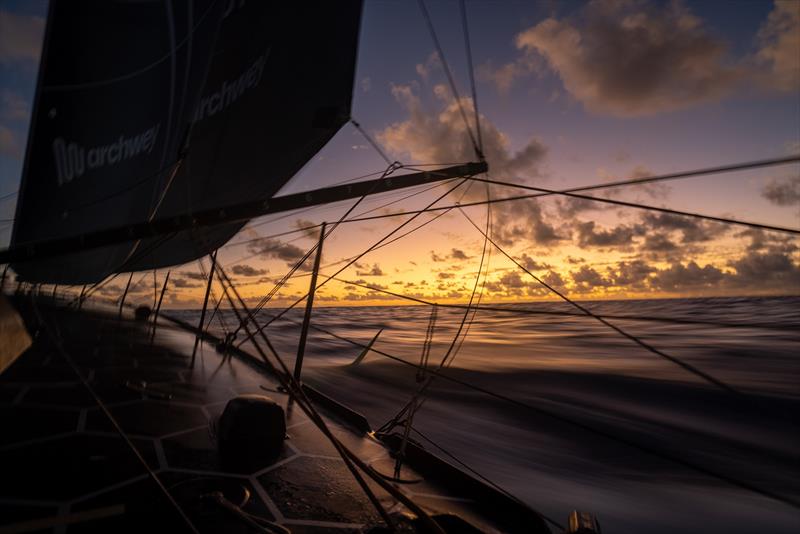
GUYOT environnement - Team Europe Leg 2 Day 10: Will the tropical leg turn into an ice race?
by Offshore Team Germany 3 Feb 2023 21:50 UTC
3 February 2023

Finding a way south through the highs in the coming days is the teams' task © Charles Drapeau / GUYOT environnement - Team Europe
The unusually strong high-pressure system in the South Atlantic continues to keep the five IMOCA teams away from Cape Town/South Africa in The Ocean Race.
The second leg of the world race will probably take a few days longer than originally planned. After eight and a half days at sea, not even half of the leg has been completed. The arrival at the finish, originally scheduled for 9 February, is no longer possible. And in the further course to South Africa, the St. Helena High, extending from the African to the American continent, blocks the fleet's way twice more.
To avoid the high, a deep dive into the South Atlantic is necessary. Not only will it be bitterly cold for the crews, who had recently complained of heat on board, the course could even lead them close to the foothills of the ice zone. The approach to Cape Town could then be from the south.
The caprices of the wind systems have been felt by the crews in the past few days. For GUYOT environnement - Team Europe, defending the lead became an up and down affair. Up to 70 miles was the virtual lead of the black yacht in the south-east trade wind, then it all melted away within a few hours.
Skipper Robert Stanjek looks back once again: "We were able to play to our boat's strengths after the Doldrums - a nice jib reach. We liked that very much. And when we checked the tracker, we were really happy to see that we were the fastest. But then the wind started to get lighter, and at night we drove into a huge cloud. It had a diameter of 80, 90, 100 miles. There were unbelievable rain passages in it and wind directions in which we had to jibe. Suddenly we also had a westerly wind. At times we stopped completely, shortly afterwards we had 28 knots on the display again. It's very frustrating."
By midday on 2 February, the European crew were free out of the cloud again, but had lost the lead by then. With gentle trade-wind conditions, the turnaround was then quickly achieved. While GUYOT environnement - Team Europe picked up speed and headed straight south, the competing boats were stuck further west. By the morning of 3 February, the regained lead had even grown to 80 nautical miles, only to melt away again.
"Whether the separation from the field will do us any good remains to be seen. The pronounced wedge of high pressure is forcing us all deep south, maybe even south-west. That doesn't make us happy," Stanjek explained.
Navigator Sébastien Simon is persistently looking for a way out of the high-pressure trap: "The finish line is very far for us. So we have to stay focussed for the next part of the race. After the high pressure we have to manage all the suptropical low pressure. The game is not finished. We have to sailing our boat, sailing our strategy." And the crew with Pit Anne-Claire Le Berre and Bowman Phillip Kasüske is constantly working to keep speed in the boat. "We are constantly trimming the boat to be as fast as possible. Sometimes it works well when we look at the tracker, sometimes not. That's life, that's sport," said Anne-Claire Le Berre.
Phillip Kasüske also reported on the ups and downs on board: "Exactly 24 hours ago, I started my watch and came on deck when the sails were completely flapping and we had no wind at all. But it slowly, slowly came back and we made very good gains again. I think we got most of our lead back. We are happy to be racing again. The mood is good again after yesterday's upset."
In the meantime, however, they are already calculating on board how plentiful the food supply will be for the rest of the leg. And with the food rationing, the diesel supply must also be closely monitored. On board the engine is the most important energy supplier for the hydraulic systems, the watermaker and the electronic instruments. Energy consumption has therefore already been reduced to a minimum, some instruments are only turned on intermittently in order to reach Cape Town safely despite the time delay.